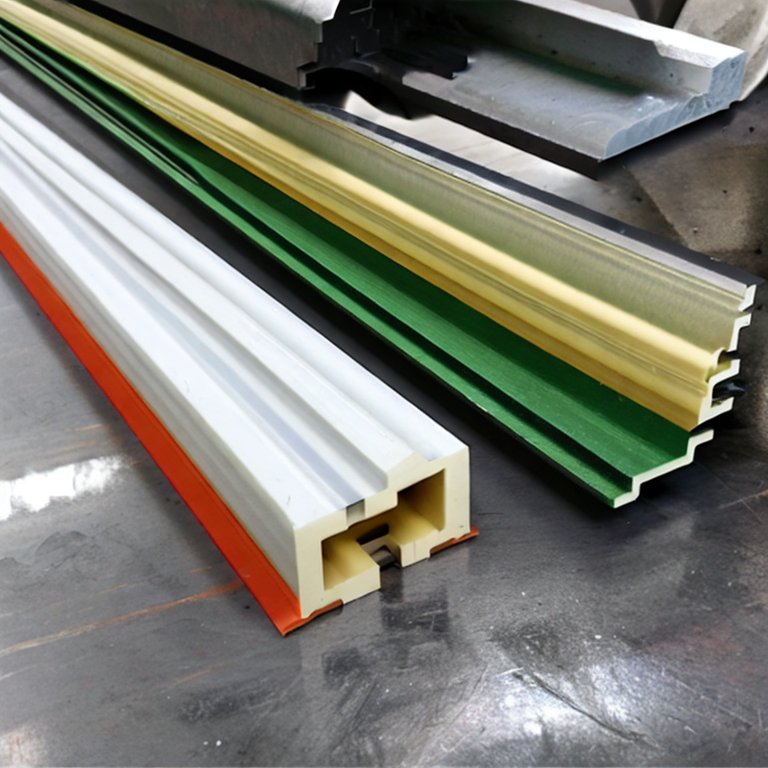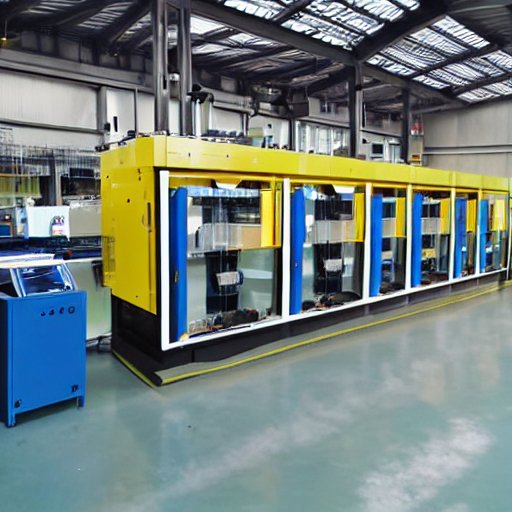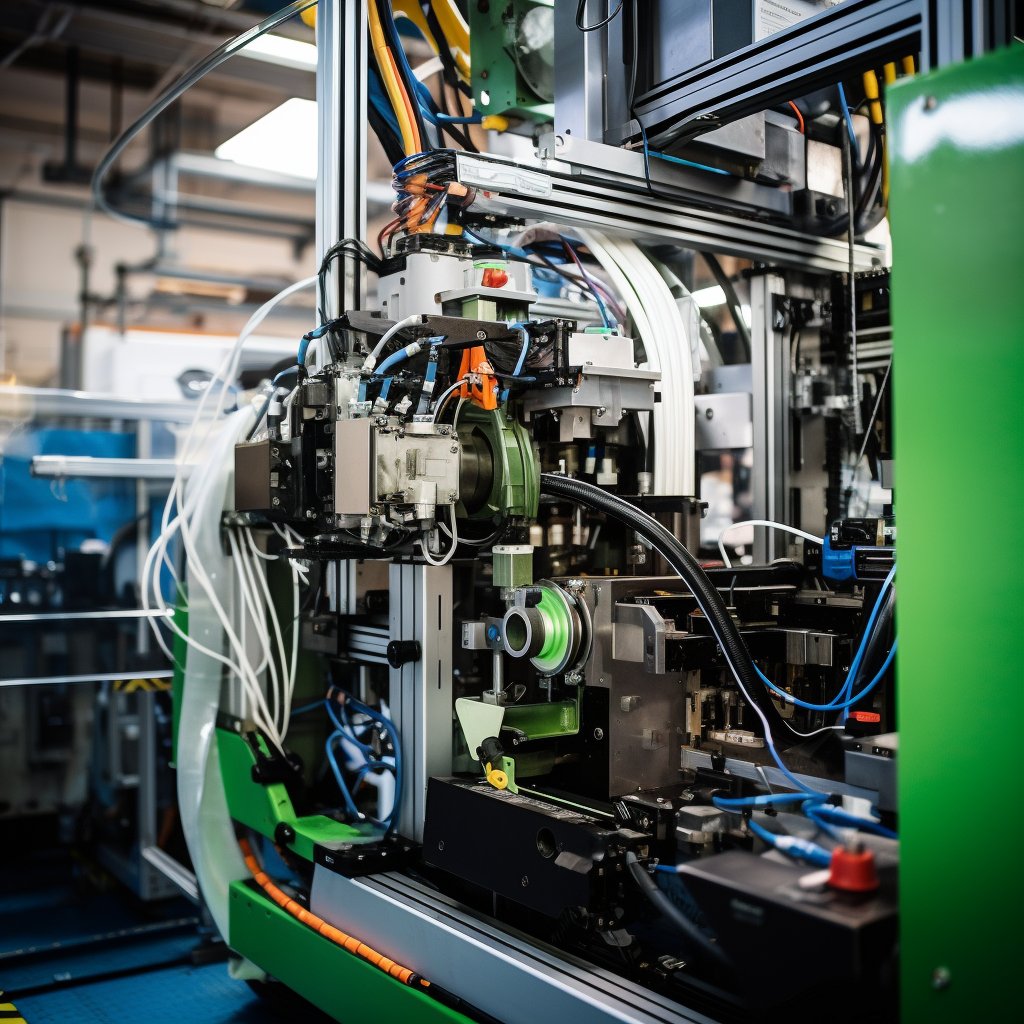Plastic moulding has been the backbone of the manufacturing industry for decades. The industry has seen rapid growth, with new technologies emerging every day. Transfer moulding is one of industrial applications’ most popular plastic moulding techniques.
Plastic moulding is a crucial process in manufacturing various products, from consumer goods to industrial components. Transfer moulding is a widely used method in plastic moulding that offers precise control over the moulding process, allowing for highly accurate production of complex parts. However, transfer moulding has advantages and disadvantages, and its environmental impact is a growing concern.

What is Transfer moulding?
Transfer moulding is a manufacturing process used to make plastic parts by injecting molten plastic into a mould. The mould is then filled with molten plastic, which is then compressed using a plunger to create the final product. Transfer moulding is a semi-automated process that allows for consistent and accurate production of plastic parts.
Industrial Usage:
Automotive manufacturers use transfer moulding to create door handles, dashboard, and engine components. Aerospace manufacturers use transfer moulding to create aircraft windows, wingtips, and landing gear components. Medical device manufacturers use transfer moulding to create catheters, syringes, and prosthetic devices. Electronics manufacturers use transfer moulding to create parts such as computer components, cell phone components, and audiovisual equipment.
Application Areas:
Transfer moulding is used in a variety of application areas. One of the most popular applications is the creation of consumer products. Consumer products such as cell phone cases, computer peripherals, and audiovisual equipment are made using transfer moulding. Transfer moulding is also used to create medical devices such as catheters, syringes, and prosthetic devices. Aerospace and automotive manufacturers also use transfer moulding to create product components.
Consumer Product Examples:
Some consumer products that are created using transfer moulding include phone cases, tablet cases, computer keyboards, and mouse pads. Audiovisual equipment such as speaker enclosures and TV remote controls are also created using transfer moulding. Other examples include automotive parts such as dashboard components and engine components.
Material Properties:
Transfer moulding can be used with various materials, including thermoplastics and thermosets. Thermoplastics are plastics that can be melted and remoulded, while thermosets are plastics that cannot be remoulded once they have been moulded. Some of the most popular thermoplastics used in transfer moulding include nylon, ABS, and polycarbonate. Some of the most popular thermosets used in transfer moulding include epoxy, polyester, and phenolic.
Future Trends in Recycling:
Recycling is an essential trend in the plastic moulding industry. The industry is constantly looking for ways to reduce waste and improve sustainability. One of the trends in recycling is the use of recycled plastic materials in transfer moulding. This allows manufacturers to reduce their reliance on virgin materials and reduces the environmental impact of plastic moulding.
The future of the transfer moulding market looks promising, with new materials and applications being developed. The development of new materials, such as bioplastics, is expected to drive demand for transfer moulding in the coming years. Additionally, the trend towards sustainability and recycling is expected to increase the demand for transfer moulding using recycled materials. The use of automation and advanced technologies, such as artificial intelligence and machine learning, is also expected to drive efficiency and reduce costs in the transfer moulding process. Overall, the transfer moulding market is expected to grow in the coming years, driven by increasing demand from various end-use industries and advancements in materials and technologies.
Transfer mouldings impact
Transfer moulding in plastic is a popular manufacturing process used for many years. In recent years, the global market for transfer moulding has seen significant growth, driven by increasing demand from various end-use industries such as automotive, aerospace, medical devices, and electronics. The market is expected to grow in the coming years, with new applications and materials being developed.
Market Price Developments:
The price of transfer moulding in plastic is influenced by various factors such as raw material costs, labour costs, and manufacturing process costs. The cost of raw materials, such as thermoplastics and thermosets, can fluctuate based on supply and demand. Labour costs and manufacturing process costs can also vary based on location and the level of automation used in the process. The complexity and size of the part being produced can also affect the price.
Global Impact:
The global impact of transfer moulding in plastic is significant, as it is used in various industries and applications. The growth of the transfer moulding market has been driven by increasing demand from emerging economies, particularly in Asia-Pacific. The rising demand for lightweight and fuel-efficient vehicles in the automotive industry, along with growing demand for medical devices, is expected to drive the growth of the transfer moulding market in the coming years.
How to transfer moulding impacts recycling
When discussing transfer moulding in plastic, it is important to consider its impact on the environment and its role in promoting sustainability through recycling. Transfer moulding generates plastic waste, which can have negative environmental impacts if not disposed of properly. Therefore, it is essential to develop sustainable waste management practices, such as recycling, to reduce the amount of plastic waste generated.
Recycling is an important trend in the plastic moulding industry, and transfer moulding can play a crucial role in promoting sustainability. Recycled materials, such as recycled thermoplastics and thermosets, can be used in transfer moulding to reduce the reliance on virgin materials and reduce the environmental impact of plastic moulding. Manufacturers can reduce their carbon footprint by using recycled materials in transfer moulding and promote circularity in the production process.
Moreover, recycling plastic waste can also create new business opportunities, as recycled materials can be sold at a lower price than virgin materials, which can incentivise manufacturers to incorporate them into their products. Additionally, recycled materials can meet the demand for sustainable products, increasing among consumers.
Advantages and disadvantages
Transfer moulding is a popular plastic moulding process that involves melting plastic pellets or granules in a heated chamber and then transferring the molten plastic to a closed mould cavity. The plastic is then cooled and solidified, resulting in a finished part. Transfer moulding is similar to compression moulding but offers greater precision and control over the moulding process.
Advantages of Transfer moulding:
One of the main advantages of transfer moulding is its ability to produce parts with high precision and accuracy. The process also allows for the use of a wide range of materials, including thermoplastics and thermosets, and can produce parts with complex geometries. Transfer moulding also allows for greater control over the moulding process, resulting in consistent and repeatable parts. Additionally, the process can be automated, reducing labor costs and increasing efficiency.
Disadvantages of Transfer moulding:
Despite its advantages, transfer moulding also has some disadvantages. Due to the cost of moulds and equipment, the process can be more expensive than other moulding methods, particularly for small production runs. The process can also be slower than other moulding methods, particularly for large parts. The transfer moulding process can also generate more waste and scrap than other moulding methods.
Transfer Mouldings:
Transfer moulding in plastic is a powerful tool for creating complex parts with high accuracy, making it a widely used method in the plastics industry. However, the process also has its environmental challenges, especially regarding waste management and carbon footprint. To address these challenges, manufacturers need to embrace sustainable manufacturing practices and circular economy principles. By reducing waste, increasing recycling rates, and promoting the use of renewable energy, we can create a more sustainable and resilient plastic moulding industry that benefits both the environment and the economy.
As consumers and industry professionals, we all have a role to play in promoting sustainable plastic moulding practices. Whether it’s reducing plastic waste, supporting recycling initiatives, or advocating for government policies that promote sustainability, we can all make a difference. By working together, we can create a more sustainable and circular plastic moulding industry that meets the needs of the present without compromising the ability of future generations to meet their own needs.






